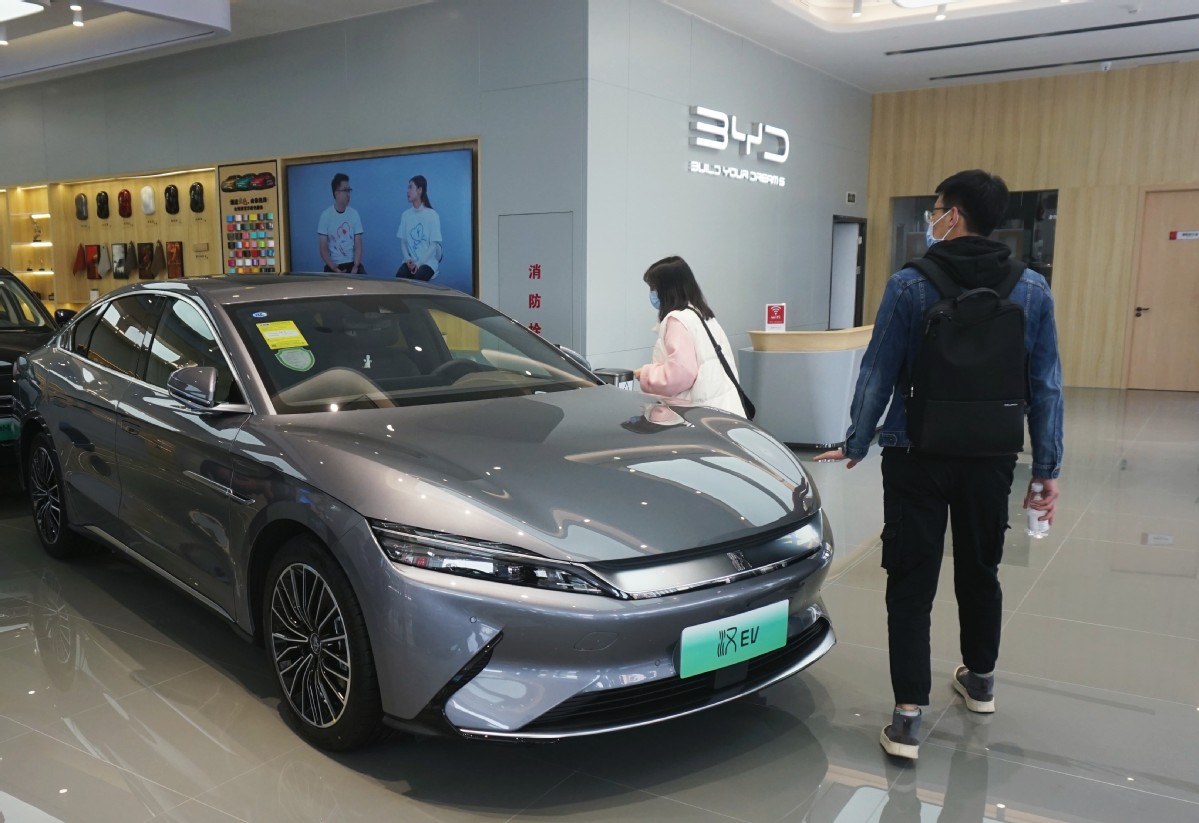
Visitors look at new energy vehicle in a store in Hangzhou, East China’s Zhejiang province, on April 5, 2022. [Photo/IC]
BEIJING — China’s auto market is gearing up for faster recovery as policymakers flesh out details for a stimulus package to help the hard-hit industry that plays a critical role in boosting demand, lifting consumption and creating jobs.
In the latest move, China has decided to slash the purchase tax by half for passenger cars under 300,000 yuan ($44,709) with engine displacements within 2 liters purchased between June 1 and Dec 31 this year.
The tax, which usually stands at 10 percent of a vehicle’s sticker price, has now been cut to 5 percent.
The decision is in line with a State Council circular regarding a package of policy measures to stabilize the economy. It called for efforts, including the tax cut, to shore up consumption, especially purchases of big-ticket items.
The market impact of the tax cut has been almost immediate as stores have already started to get a flurry of inquiries from prospective customers.
Boosted by the new policy, the China Passenger Car Association revised its domestic sales forecast of passenger cars to 21 million units this year, up by 2 million from its previous prediction in mid-May.
China has been the world’s largest auto producer and consumer for 13 consecutive years and has played a key role in the global supply chain. But since the beginning of this year, the colliding impacts of raw material price increases and the epidemic have hurt market sentiment.
Data from the China Association of Automobile Manufacturers (CAAM) showed that China’s auto sales plunged 47.6 percent year-on-year in April.
While the latest tax cut will have a direct effect on the consumption end, analysts have also pinned hope on rising auto sales to strengthen other upstream and downstream industries across the entire supply chain.
Chen Shihua, deputy secretary-general of the CAAM, estimated that the tax cut would generate additional sales of more than 2 million units and drive up auto consumption by over 300 billion yuan.
“If factoring in upstream and downstream industries such as auto parts, raw materials and financial insurance business, the tax cut will stimulate consumption in the entire industry by 500 billion yuan,” Chen noted.
Aside from the tax cuts, the Ministry of Finance and the State Tax Administration on Tuesday also urged localities with car purchase restrictions to raise the cap on number plates and ease requirements on eligible buyers.
Metropolises like Shanghai and Shenzhen have increased their rations of registration plates. Provincial-level regions like Jilin and Chongqing introduced measures including subsidizing new car purchases and facilitating entry to urban areas for pick-up trucks.
The government is also rolling out promotional campaigns in rural areas to spur sales of new energy vehicles. A total of 26 auto firms are joining a series of online promotional campaigns targeting car buyers in rural areas.
Data from the CAAM showed China saw total sales of nearly 1.07 million units of new energy cars through the campaigns last year, surging 169.2 percent year on year.
As the series of stimulus policies is implemented, the auto industry is set for a new round of restorative growth to help underpin the steady development of the broader economy, analysts said.
